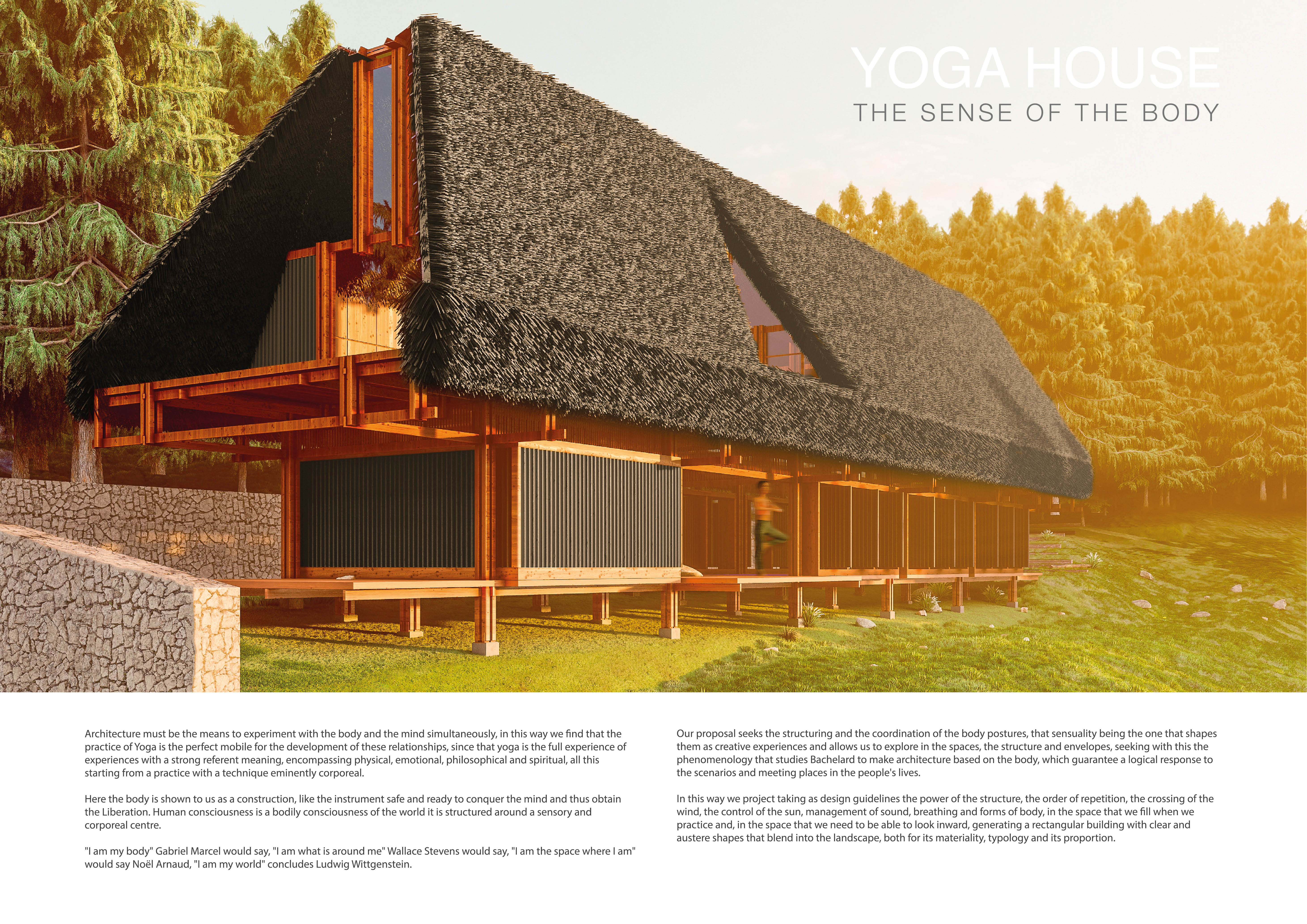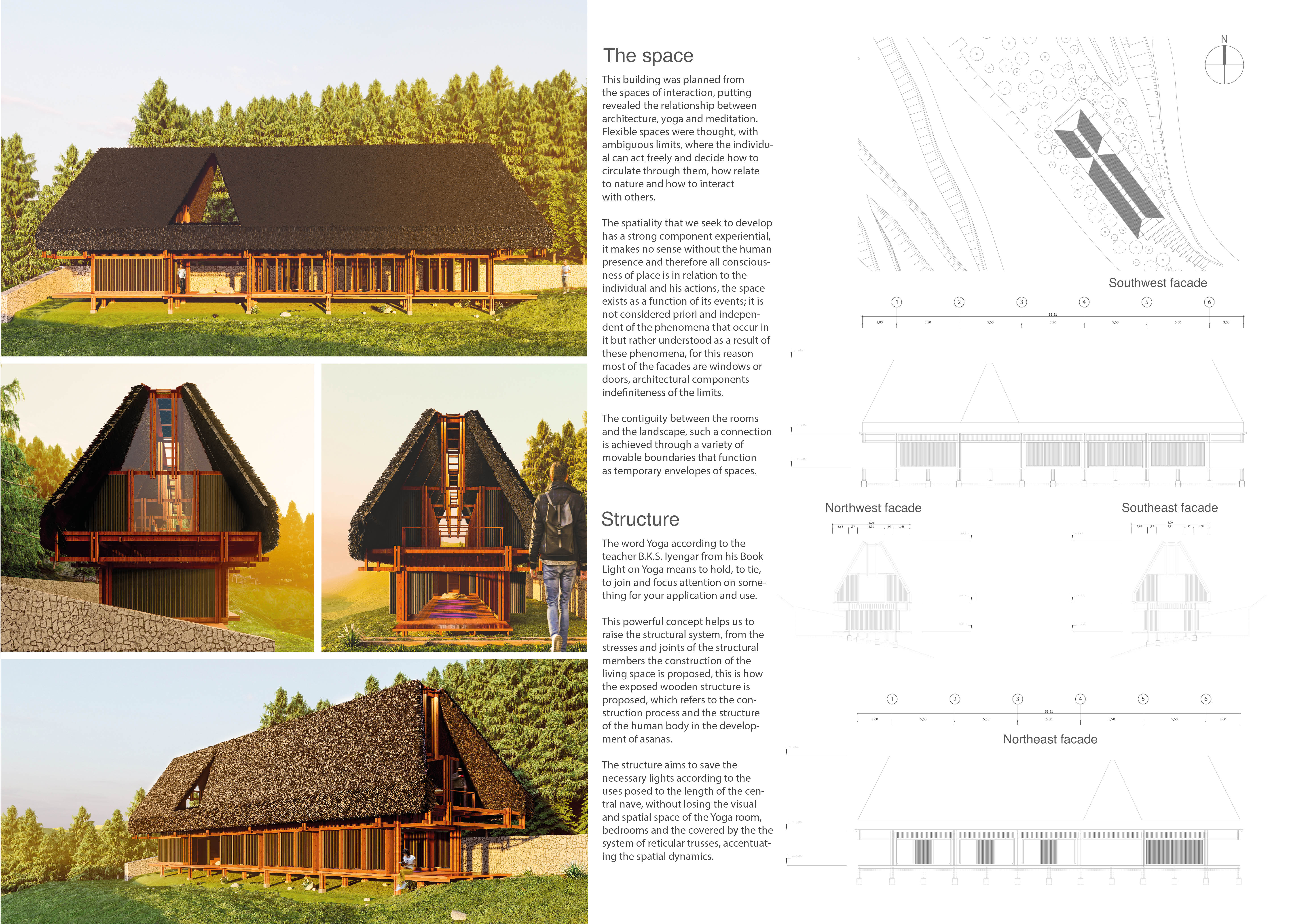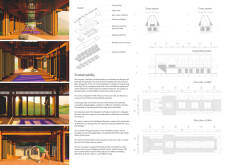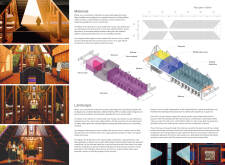5 key facts about this project
The Yoga House is located in a tranquil environment, designed to support the practice of yoga and meditation. The structure focuses on creating a balance between the physical space and the well-being of its users. With a design that aims to enhance introspection and movement, it fosters a space where individuals can gain both physical and mental clarity. The overall concept emphasizes simplicity and unity with nature.
Spatial Arrangement
The layout features flexible spaces that encourage movement and interaction among users. These areas have no clear boundaries, allowing occupants to move freely and connect with their surroundings. By promoting fluid circulation, the design enhances the relationship between the interior spaces and the natural landscape outside, resulting in a more engaging experience.
Materiality
In choosing materials, the Yoga House uses straw and wood, both known for their sustainability. Straw is an agricultural by-product that provides good insulation and helps reduce the environmental impact of construction. Wood adds structural strength and thermal efficiency, complementing the benefits of straw. Together, these materials reflect the project's focus on ecological responsibility while contributing to a warm, inviting atmosphere.
Natural Light and Ventilation
The design pays close attention to how light and air flow through the space. Windows and openings are strategically placed to ensure effective cross-ventilation, improving indoor air quality. This reduces the need for mechanical systems while creating a comfortable environment. The building’s orientation allows natural light to fill the interior throughout the day, enhancing the calm needed for yoga practice.
The roof extends outward, connecting the indoor spaces with the surrounding landscape. This feature invites the outside in, highlighting the interplay between the building and nature. Such details add depth to the overall design, reinforcing the commitment to creating a harmonious relationship with the environment.





















































